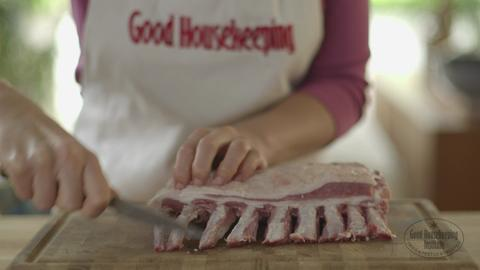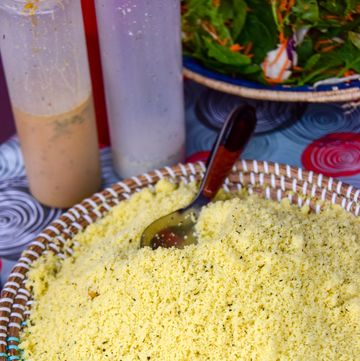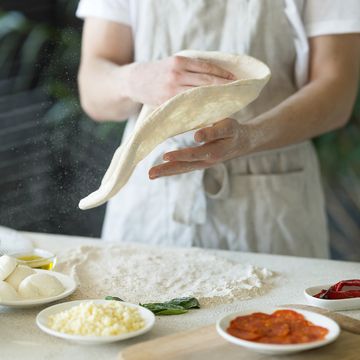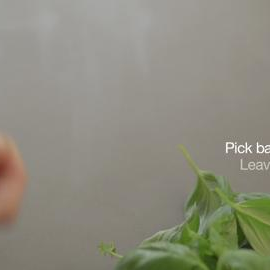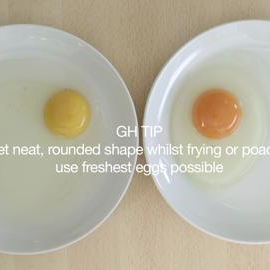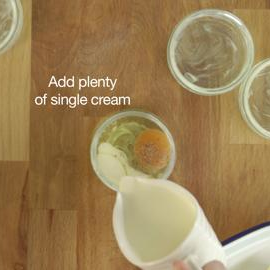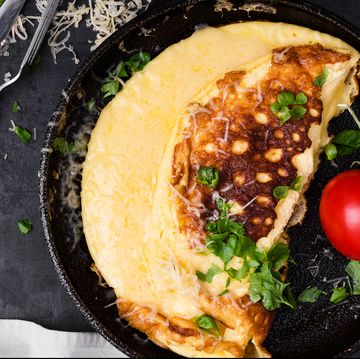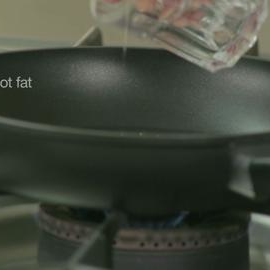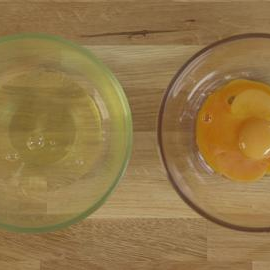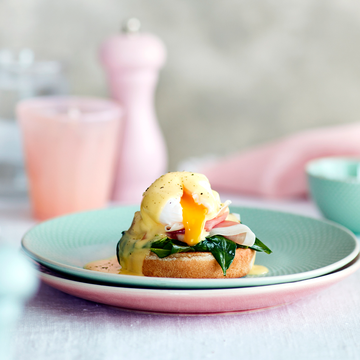1. A rack of lamb is also called best end of neck. To prepare it for roasting, first get the butcher to remove tough papery outer skin and chine bone, leaving just the rib bones and an outer layer of fat.
2. Use tip of knife to cut out small crescent of cartilage from shoulder blade that’s located in between fat layers at one end and cut out and discard rubbery white tendon found along edge of fillet.
3. Trim fat off tips of bones, this is called ‘English trim’. On the side where bones are, make a vertical cut through fat, down to rib bones, about 2.5cm (1in) in from edge. Cut away fat, as close to bones as possible. The tips of bones will then be exposed. Now cut between each bone, down to ridge of fat that remains, and remove meat and fat, so that each individual bone is clearly defined. Scrape tops, sides and bottoms of exposed bones to remove all fat, meat and connective tissue. Leaving just clean white bones. Any remaining tissue on bones will cause them to blacken when rack is roasted.
4. Now score fat covering the rack in diagonal lines then counter diagonal lines to create a diamond effect. Take care not to cut into the meat. This helps fat render when cooking, to prevent a chewy layer.
5. Roast rack of lamb in a roasting tray at 220°C (200°C fan) mark 7 for 18-20min, for crisp golden fat and pink tender meat. Cook for longer if you prefer your meat well done. Rest for 5min, then carve between bones to serve individual cutlets.
Use your skills to make these triple-tested recipes:
Herby rack of lamb recipe
Sunday lunch recipes
Easter lunch recipes
Oak chopping board, Lakeland. Pro boning knife, Pro paring knife, ProChef’s knife, Zwilling J.A. Henckels. Classic non-stick metal rectangular roaster, Pyrex.
An experienced and highly skilled team of food writers, stylists and digital content producers, the Good Housekeeping Cookery Team is a close-knit squad of food obsessives. Cookery Editor Emma Franklin is our resident chilli obsessive and barbecue expert, who spends an inordinate amount of time on holidays poking round the local supermarkets seeking out new and exciting foods. Senior Cookery Writer Alice Shields is a former pastry chef and baking fanatic who loves making bread and would have peanut butter with everything if she could. Her favourite carb is pasta, and our vibrant green spaghetti is her weeknight go-to. Lover of all things savoury, Senior Cookery Writer Grace Evans can be found eating crispy corn and nocellara olives at every opportunity, and will take the cheeseboard over dessert any time (though she cannot resist a slice of tres leches cake). With a wealth of professional kitchen know-how, culinary training and years of experience between them, they are all dedicated to ensuring every Good Housekeeping recipe is the best it can be, so you can trust they’ll work (and if they don’t – we’ll have the answer for why*) every time (*90% of the time the answer is: “buy an separate oven thermometer”!).
